A couple of months ago I knew almost nothing about Sri Lanka. Except that it was well known for growing tea, and had a temple famous for housing a tooth of some sort. I’m slightly embarrassed to admit I didn’t even know much about the religion in Sri Lanka, and was a little surprised to discover that the majority of the population are Buddhists rather than Hindus. On digging further, I realised that the tooth in question is in fact supposed to have belonged to the Lord Buddha himself, and the temple is none other than the Temple of the Sacred Tooth in the cultural city of Kandy.
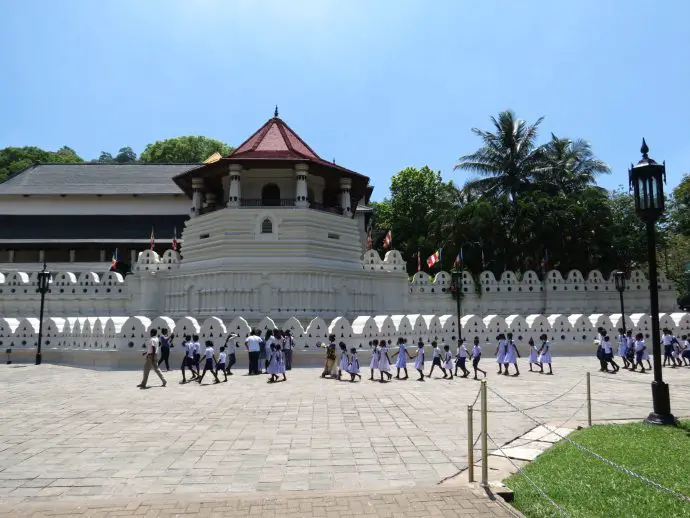
We had been visiting Villa Aqua Dunhinda not far from Kandy, and couldn’t wait to find out if the Temple of the Tooth was worth a visit. My grandparents had visited when they were stationed out in Ceylon during the war, and I was excited to follow in their footsteps.
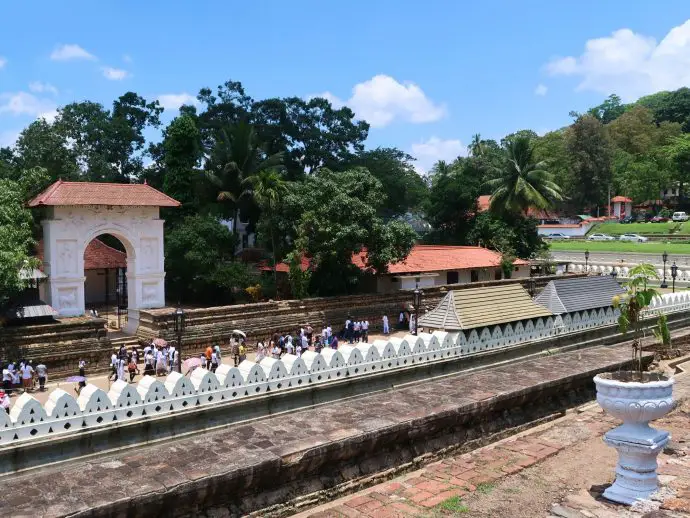
The Temple
The Temple of the Sacred Tooth (Sri Dalada Maligawa) was originally built by the Kandyan Kings between 1687 and 1707, in order to house and honour the sacred tooth relic. The temple itself was badly damaged during the 18th century colonial wars against the Portuguese and Dutch, and the wooden structures were subsequently rebuilt using more robust stone. In more recent years, the temple was damaged by Hindu Tamil separatists in 1998, although once again, the tooth relic was unharmed.
The temple buildings are perhaps not as magnificent or ornately decorated as many we’ve seen in South East Asia, yet they are rather striking with their red roofs and white stone walls overlooking Kandy Lake. The low walls have simple carved openings that give a filigree effect, and are used to house coconut oil lamps and candles during festivals.
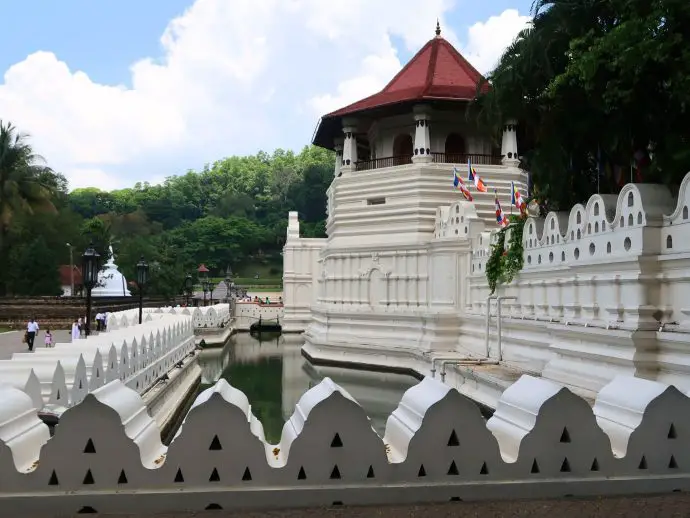
It’s inside where the magic happens. In a bold contrast to the exterior, the interior temple structures are elaborately carved and painted with exotic woods, lacquer and ivory. On entering the temple complex you step into the Pallemaluwa, or the ground floor area. The chamber is intricately decorated, and it is here where the daily rituals are carried out.
Further inside is the Pattirippuwa, or Octagon, which was built by the last King of Kandy as a place where he could address his fellow countrymen. Once part of the royal palace, today this building has been incorporated into the temple and is now home to ancient texts.
Devotees file slowly and quietly along the wooden gallery, leaving their floral offerings on long tables in front of the shrine. It felt a little strange to be a tourist with a camera, alongside all these local people who were there for a more spiritual purpose, but we were welcomed just the same, and were even allowed to take photographs.
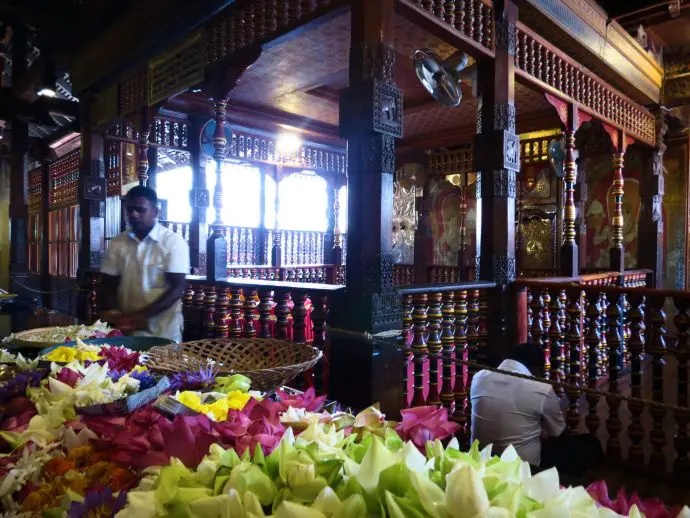
Festivals
The best time to visit Kandy is during the Esala Perahera, one of the most famous Buddhist festivals in the world. Held in July or August each year, this 10 day torchlight parade began in the 18th century to honour the sacred tooth. The relic was carried by a royal male elephant, which would lead a colourful procession of drummers, fire dancers, musicians, jugglers, acrobats, dignitaries and 100 other elephants decked out in elegant finery around the city of Kandy. If you’ve ever seen photographs of elaborately decorated elephants in Sri Lanka, it will have been from the Esala Perahera!
Unfortunately the tooth itself has not been used during the festival since 1990, as a result of tensions with the Tamil Tigers and the resulting worry that the relic could be damaged or stolen. Instead, the jewelled casket is paraded in its place.
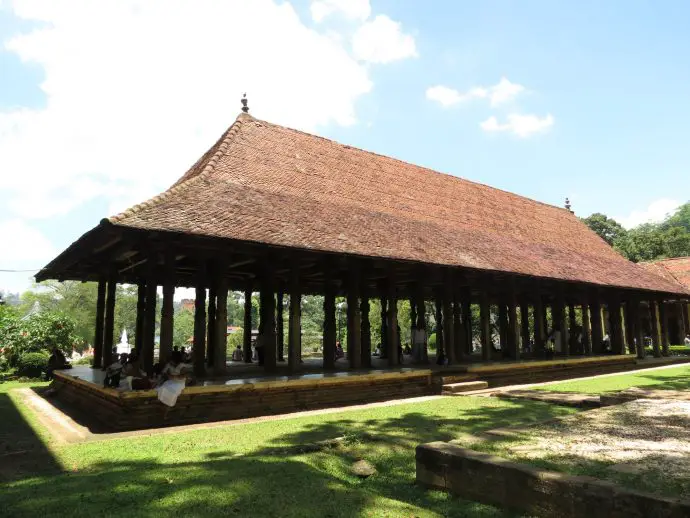
The final night of the procession ends at the shrine within the Temple of the Tooth, with elders dressed in the costumes of the Kandyan kings. The president and country leaders also take part in the ceremony to reinforce their dedication to serving the people of Sri Lanka. About a million people attend the Esala Perahera each year, and as the temple is seen as part of Sri Lanka’s cultural heritage, many Tamil Hindus and Christians also take part.
Visiting the Temple of the Tooth
Every day white robed pilgrims make the journey to the temple, bearing offerings of lotus blossoms and frangipani to honour the precious relic. The flowers are purchased from vendors beside the temple gates, and the whole complex is wonderfully scented with blossoms and incense. Visitors of other faiths as well as tourists are welcomed at the Temple of the Tooth, and it’s very easy to navigate your way around. Just follow the slow procession of devotees filing through the halls and past the relic.
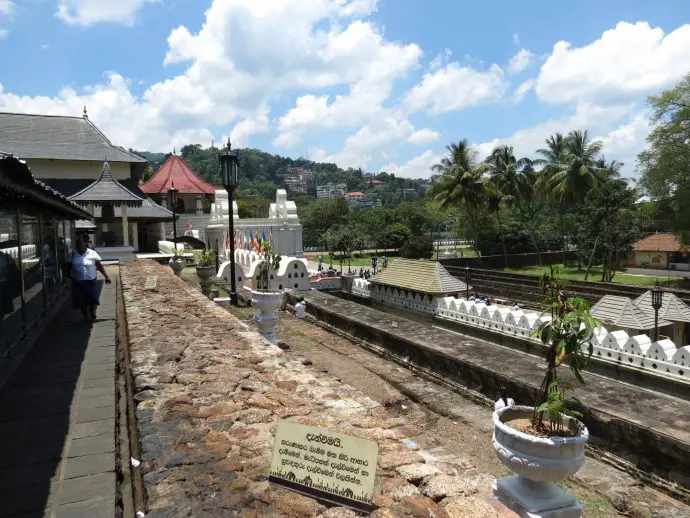
You can hire a guide at the entrance, and be aware that if anyone starts chatting to you whilst you’re buying your ticket, it is likely that they will be guides. Only allow them to accompany you if you’re willing to pay for their tour afterwards! If you prefer to go it alone, take a guide book as information is scarce. However, inside one of the halls, there is a series of informative story boards (in English) telling the legend of the sacred tooth.
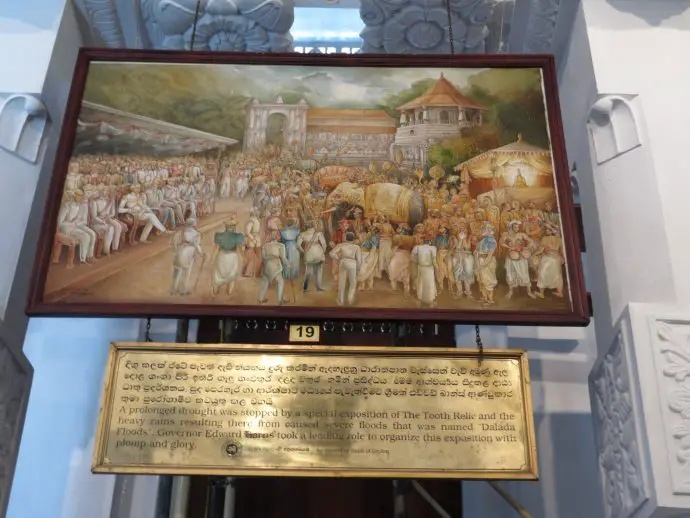
There are several museums to explore (entrances are included in the ticket price and many of the labels are in English), and the King’s palace is also inside the temple grounds, although this is not open to visitors.
Temple Entrance: SKR 1500 per person.
Opening hours: 05.30 – 20.00 hours
Top Tip: You will need to remove your footwear before entering the temple – shoes are stored at the entrance and handed back on departure. It’s a good idea to wear socks to avoid burning your feet (the pathways outside become very hot in the sun).
Where to stay: There are lots of accommodation options in Kandy, you can check here for prices and availability:
If you prefer to stay outside the city, we recommend Villa Aqua Dunhinda, a luxury villa overlooking the Kothmale Forest, which gave us the best of both worlds. I have to say it was good to be able to retreat to the tranquil countryside after spending the afternoon in bustling Kandy!
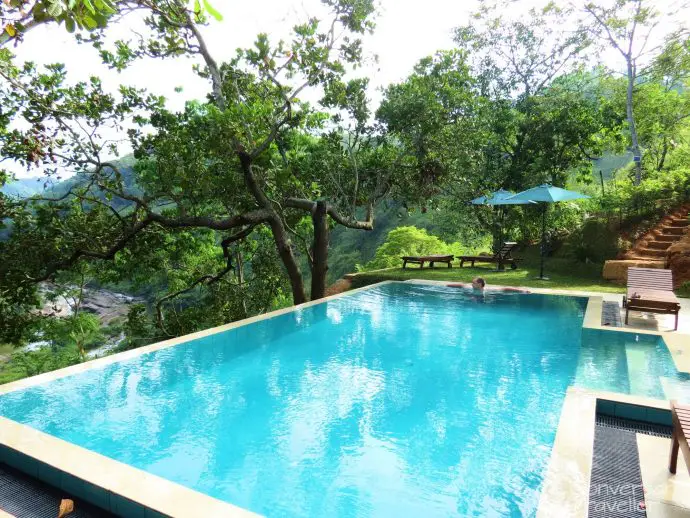
Enjoyed this post? Why not pin it for later…
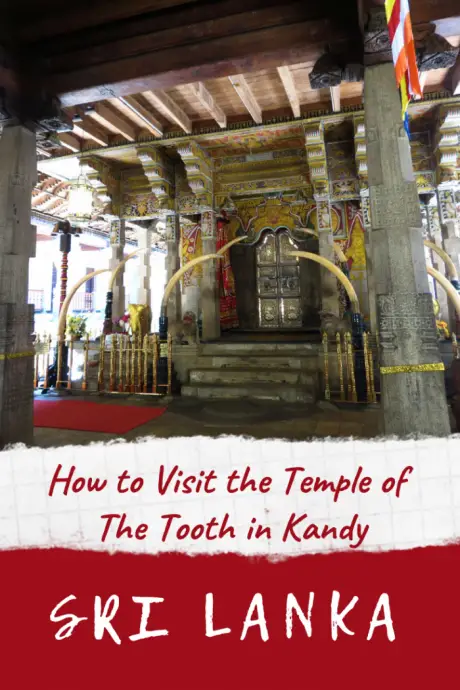

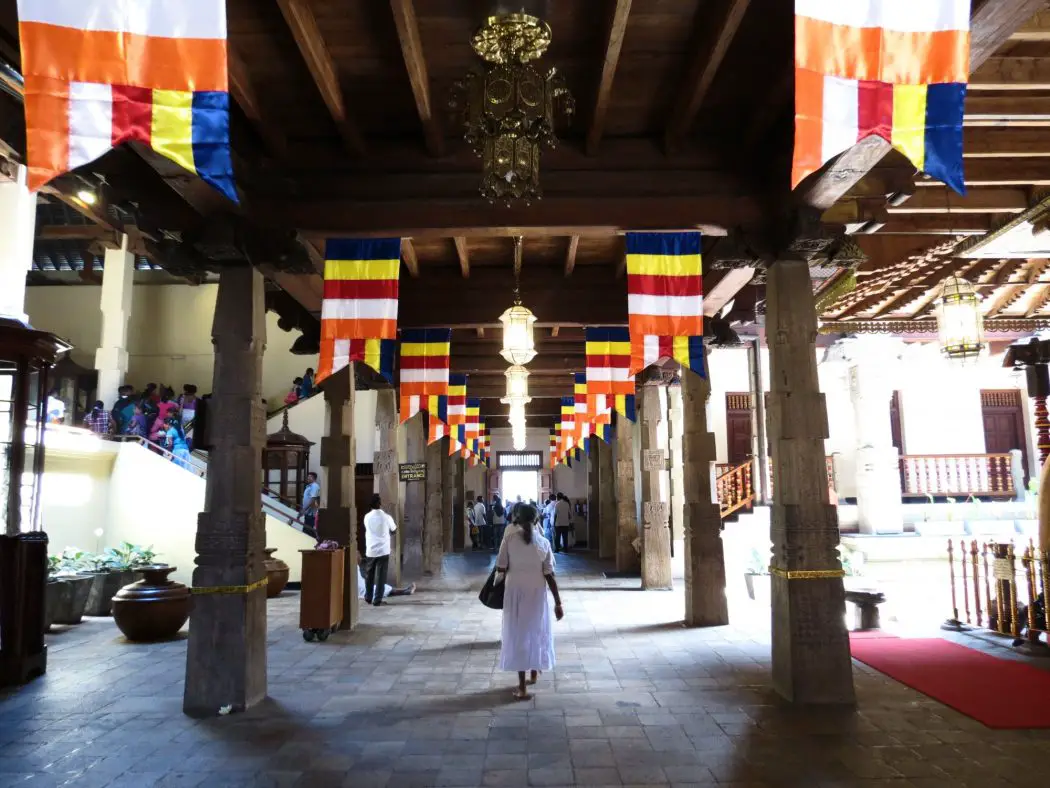
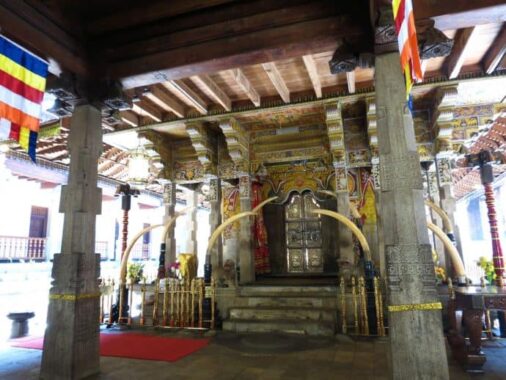
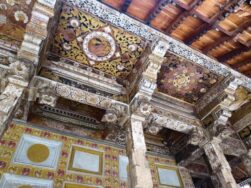
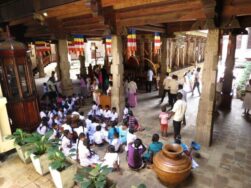
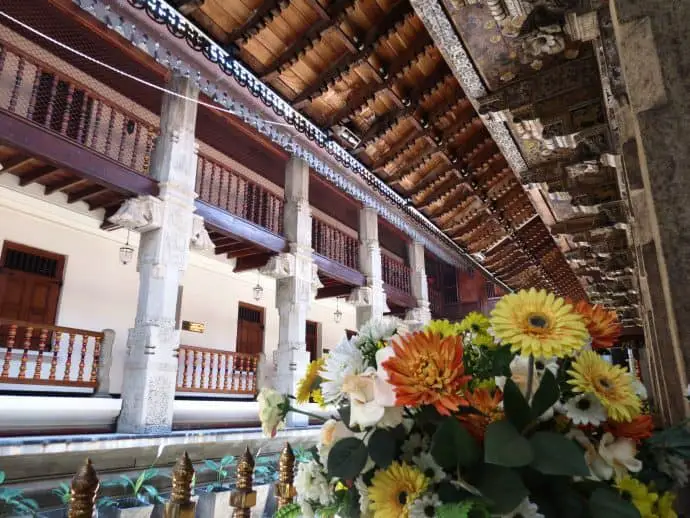
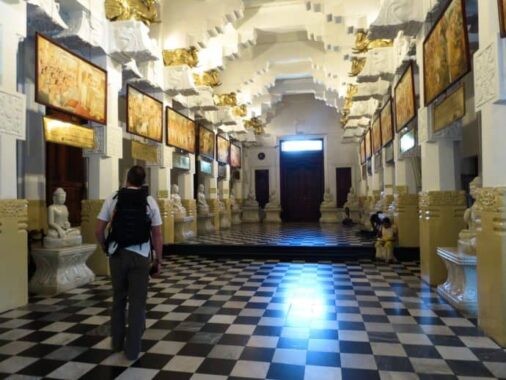
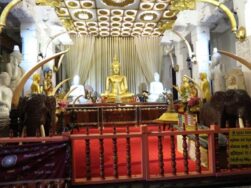
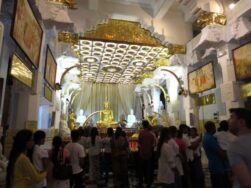
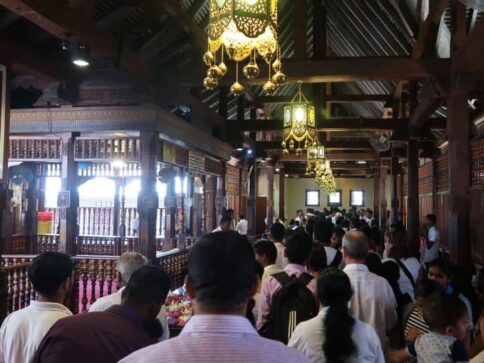
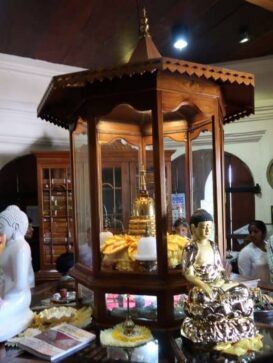
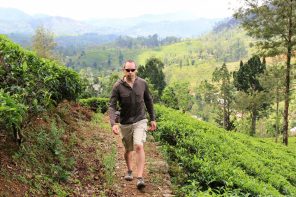



I also visited this temple on November 27, 2017. The difference between the fervor of the faithful and the curiosity of tourists is striking. To come to Sri Lanka (where I still live) without visiting this place is like going to Rome without visiting the Vatican.
When I visited it, it was raining and as I had closed shoes, I had to remove them and walk all the time to get into the temple of course, but also to walk between one place and another.
Attention, you must control the information that some guides give you because they could be dictated by religious conviction, rather than by reality.
It certainly is a strange experience having 2 sets of visitors with 2 very different reasons to visit. Does tourism diminish the religious significance, or does it indeed help (with entrance fees etc). We had to remove our shoes too, though it was very hot and the ground burnt our soles.
I traveled to Sri Lanka in the early 80s and visited Kandy and the Temple of the Tooth , I remember making a donation which allowed for my name to be inscribed somewhere in the Temple, I would love to know more about this now and verify if it was actually done . How can I find out more?
What a lovely story! I don’t know if you can still do that today, or how you can find out if it was done, but they must have records of it, so probably best to get in touch with them directly. Hope you manage to find out, good luck.
Sri Lanka is such a beautiful place. Thanks for showing us.
So Princess Hemamali was the tooth fairy? Sorry, there had to be a tooth fairy joke in there somewhere..
So where’s the actual tooth? Is it in that glass container you see in the photo?
I’d like to go the Sri Lanka someday.
Frank (bbqboy)
Ha ha, indeed, maybe that’s where the legend comes from? My teeth never fetched that much, obviously live in the wrong country 🙂 The actual tooth (supposedly) is locked away in a casket behind the panelling in the photo with the mounds of flowers and wooden balustrade. It all adds to the intrigue, is it there or was it lost centuries ago? We were surprised by how much we loved Sri Lanka, definitely recommend it if you get the chance!
Hi, no that tooth fairy thing is like this. The Sacred Tooth of Lord Gautama Buddha is preserved in Kalinga, India. The Kalinga king Guhasiva in the 4th century AD sends the tooth relic to Sri Lanka with Prince Danta and Princess Hemamala in order to prevent its possession by his enemies who made war. The tooth relic is received by the then King Meghavanna in Anuradhapura and enshrined in a 3rd-century holy edifice.
The tooth relic became a symbol of status denoting the right to ascend the throne, and later kings in the kingdoms of Anuradhapura, Polonnaruwa and Dambadeniya built temples for the relic close to the royal residences.
With the rise of the Kingdom of Kandy, the Tooth of Lord Buddha was brought to the city, where it was housed in a two-story building by the King Vimaladharmasuriya I. The building did not survive the ravages of time.
Beautiful pictures that bring back memories of our trip to Sri Lanka. Actually Kandy was the city we liked best in Sri Lanka.
Thanks Natascha, it’s certainly a beautiful place isn’t it.